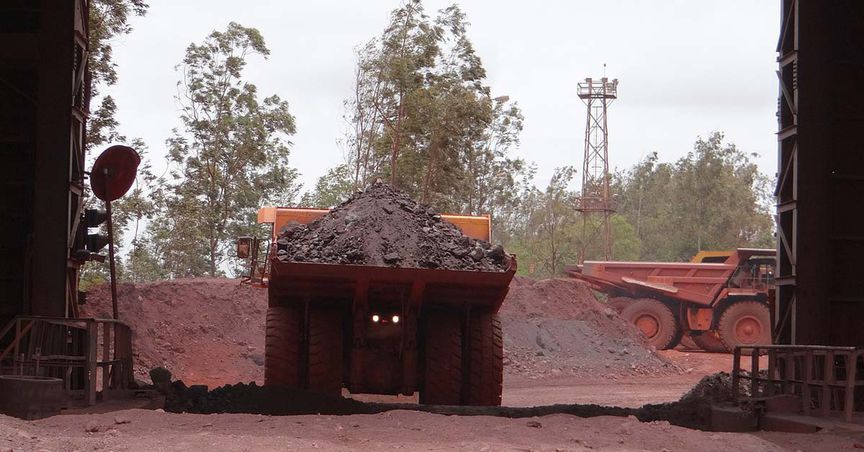Summary
- The delegation from various countries across the globe gathered in 2016 and signed a landmark agreement to address the climate change- Accord de Paris.
- The global economies are now adopting stringent policies in line with the agreement aiming to address a challenge, dire impacts of which have been recently witnessed across the continent.
- The IPCC or the Intergovernmental Panel on Climate Change assessed that the issue of global warming requires immediate and unprecedented actions, and now, most signatory nations are now working towards the same.
- Australia plans to reduce emissions to 26-28 per cent on 2005 levels by 2030, and mining players are also putting their best foot forward for contributing towards the realisation of the target.
- Joining into the vast growing list, which includes many miners such as BHP Group Limited (ASX:BHP), Rio Tinto Limited (ASX:RIO); Fortescue Metals Limited (ASX:FMG) has now announced an industry-leading emissions reduction goal.
In 2016, the consortium of nations reached a landmark agreement- Accord de Paris to accelerate actions and investments required to attain a future with less carbon footprint in order to tackle the prominent challenge of climate change, which in the recent past has shown its consequences with wildfires raging all across the continent.
The global economies are now adopting stringent policies in line with the Euro 6 standards or Accord de Paris. The Intergovernmental Panel on Climate Change (or IPCC) in its Global Warming of 1.50 Celsius report assessed that the issue of global warming requires immediate and unprecedented actions.
To Know More, Do Read: Origin Energy Joins the Cause of Reducing Carbon Footprints
The government plans to reduce emissions to 26-28 per cent on 2005 levels, which acts as a benchmark, by 2030, representing a 50-52 per cent decline in emissions per capita and 64 to 65 per cent reduction in the emissions intensity of the economy during 2005 to 2030.
Australia, which is responsible for ~ 1.3 per cent of global emissions, has a proud history of meeting and beating its international commitments on climate change, with the continent outperforming its first target under the Kyoto Protocol.
The Direct Action Plan of the government is well on track to reduce emissions by five per cent below 2000 levels by 2020, equivalent to 13 per cent below 2005 benchmark levels.
To Know More, Do Read: Australian Government Policies and Programs To Attain A Net-Zero Carbon Emission
Australia sits at the top of tonne load of natural resources and mining industry, which by weight is responsible for the highest emission, is now pulling-in efforts to fill their bid in the emission target of the government.
To Know More, Do Read: Gold Industry Emissions Profile and Pathways To Achieve Net Carbon Neutrality
The ASX-listed iron ore mining sector is under focus with many players such as BHP Group Limited (ASX:BHP), Rio Tinto Limited (ASX:RIO) putting their best foot forward to comply with emissions standards.
Also Read: BHP Climate Focus- A Ticket to Long-Term Sustainability?
While it may be seen as a trivial matter to some, many independent analysts anticipate that companies which would not address the climate change and would not participate in the collaborative efforts of signatory nations of the Accord de Paris would face many headwinds concerning stability over the long-run. ESG, i.e., Environmental, Social and Corporate Governance has become a major considerations for many investors before they make a investment decision.
To Know More, Do Read: How ESG Consideration Rings Bell In Assessing The Quality of A Mining Stock?
Fortescue Metals Group Limited (ASX:FMG) announced an industry-leading emissions reduction goal to achieve net carbon neutrality or net-zero operational emissions by 2040.
The plan proposed by the Company is the core of its climate change strategy, underpinned by a pathway to decarbonisation. FMG aims to limit its Scope 1 and Scope 2 emissions of existing operations by 26 per cent from 2020 levels by 2030.
Fortescue’s Bid to the Accord de Paris
The Company supports the landmark agreement of Accord de Paris, AKA- Paris Agreement and since October 2019 has dedicated investments of more than USD 800 million in significant energy infrastructure projects.
Chichester Solar Gas Hybrid Project is one such project of the Company, which is well advanced for the installation of 60 megawatt of solar energy, and apart from that, FMG has invested USD 700 million in the Pilbara Energy Connect program, which coupled with the Chichester Solar Gas Hybrid Project is anticipated by the miner to deliver 25 to 30 per cent of stationary energy requirement from solar power.
Furthermore, the Company would report emissions data and performance against benchmark targets every year, in which baseline and annual emissions data will be calculated on a financial year basis.
Pilbara Energy Connect and Chichester Solar Gas Hybrid Project
The USD 250 million Pilbara Transmission Project and USD 450 million Pilbara Generation Project jointly makes the PEC, which the Company would build, own, and operate. The transmission project of the PEC consists of 275km of high voltage transmission lines, connecting FMG mine sites, while the generation project consists of 150 megawatts of gas-fired generation, together with 150 megawatts of solar PV generation and large-scale battery storage.
Furthermore, the PEC leverages on the existing assets and provides the Company with a hybrid solar gas energy solution, enabling the delivery of low-cost and stable power supply while supporting additional large-scale renewable energy in the future.
The Chichester Solar Gas Hybrid Project is under construction and would be owned and operated by Alinta Energy. The project includes a 60 megawatts solar photovoltaic generation facility at the Chichester Hub.
On the hydrogen front, which in the recent past has gained significant attention thanks to large resources in Australia, especially in Tasmania, the Company had inked a landmark partnership agreement with the CSIRO to develop a metal membrane technology, which would further facilitate the bulk transportation of hydrogen through ammonia.
Also Read: Tasmania Purposes to Increase 2022 Renewable Output by Twofold- Hydro a Supporting Pillar
Furthermore, FMG is developing and constructing various hydrogen-based projects related to production, storage and use of hydrogen to ensure that the Company remains well poised to meet the demand for hydrogen as both as an export opportunity and a tool for decarbonisation.
Also Read: Hydrogen Gas- An Intriguing Oil-Demand Driven Investment Case
In a nutshell, Australia is planning to reduce emissions to 26-28 per cent on 2005 levels, and the suggestion by IPCC calls of rapid, unprecedented, and individual action. While the mining industry is the backbone of the country, it is also one of the largest Scope 1 and Scope 2 emitter.
The ongoing efforts of the continent to comply with the landmark agreement of Accord de Paris is making investors ESG conscious, leading to a drive addressing the climate change, prompting mining players to bid their contribution.
FMG has now committed to reach net-zero operational emission by 2020, and the miner is aiming for the goal on the back of its PEC and Chichester Solar Gas Hybrid projects.



